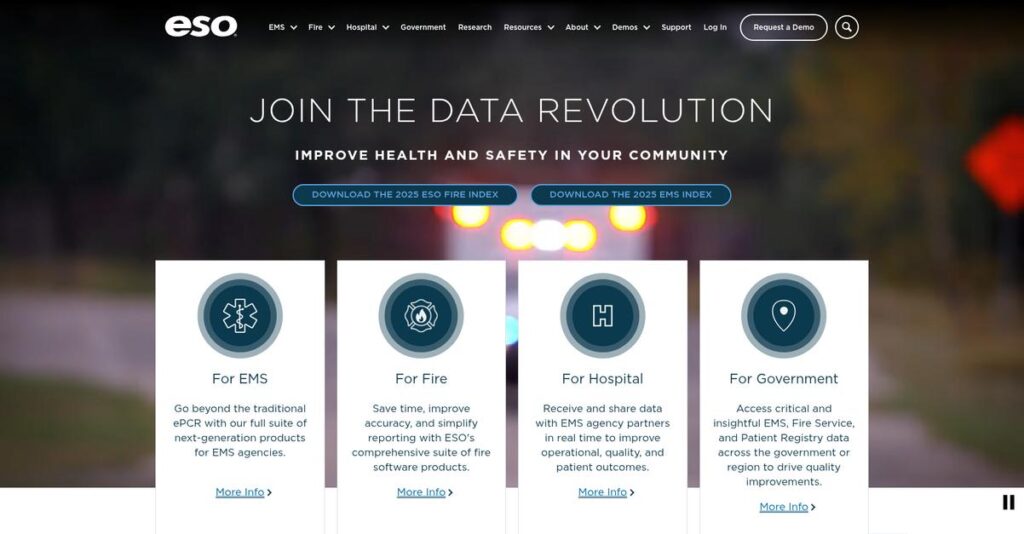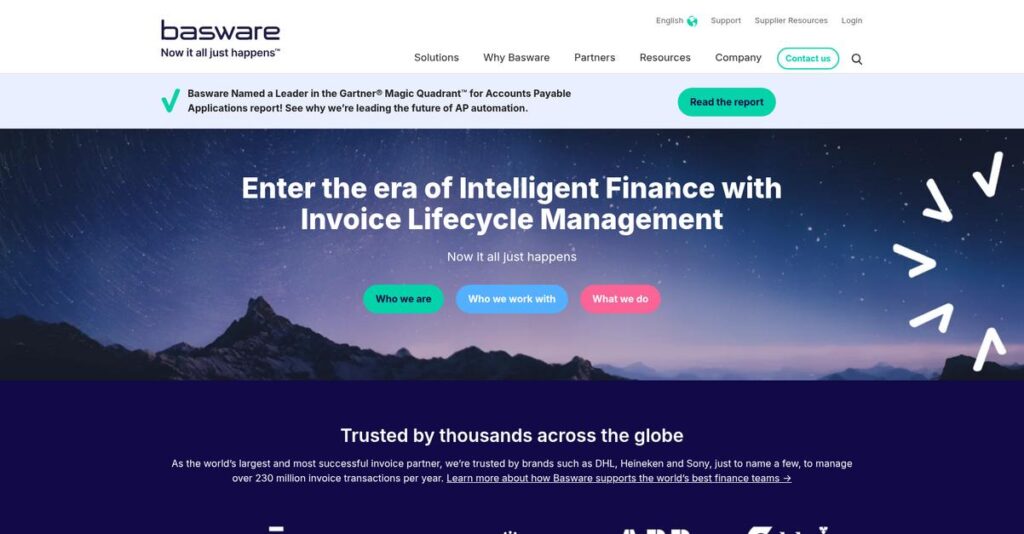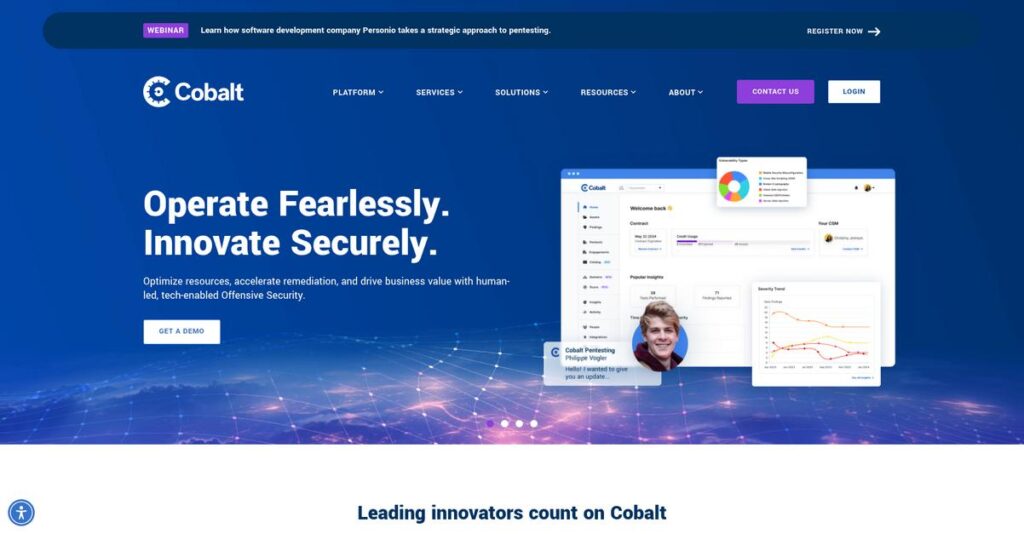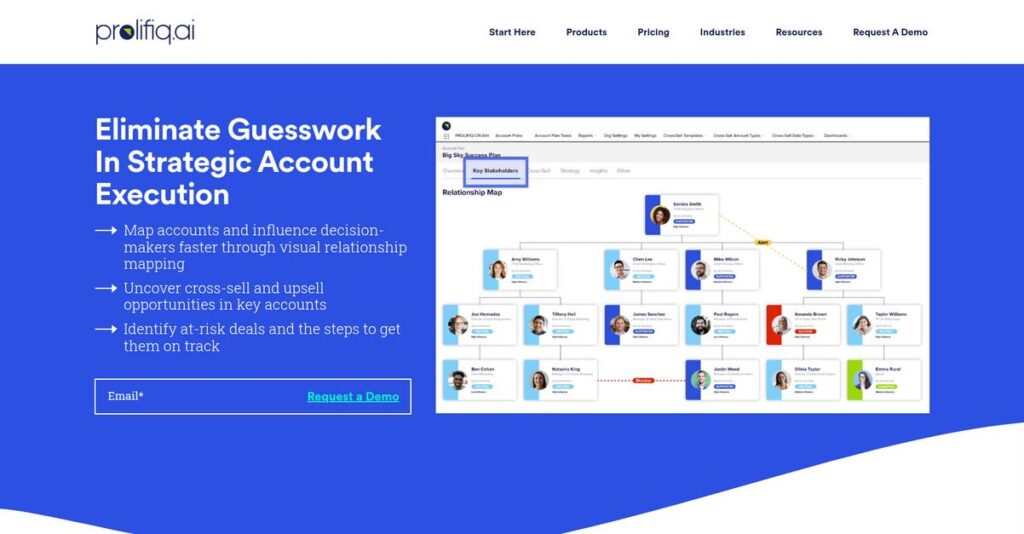Too much manual data entry hurts your team.
If you’re running EMS, fire, or hospital operations, you’re probably frustrated by disconnected software that forces double documentation and slows everyone down.
But the core problem isn’t just inefficiency—it’s that errors lead to wasted hours and missed details that affect patient care and reporting accuracy.
ESO takes a different tack, focusing on real connectivity across EHR, dispatch, fire records, and hospital data to save your team time and cut down mistakes. Their recent upgrades, like auto-captured vitals and deep integrations, promise less paperwork and more real-time insight at every stage.
In this review, I’ll show you how ESO brings all your emergency data together so you can finally spend more time on care instead of repetitive admin.
You’ll find the full breakdown in this ESO review—covering every important feature, what real user workflows look like, how pricing stacks up, and what sets ESO apart from other options.
By the end, you’ll know which features you need to fix your workflow—and have the confidence to make the right software decision.
Let’s get started.
Quick Summary
- ESO is an integrated software suite that helps EMS, fire departments, and hospitals streamline patient care and operational data management.
- Best for emergency medical services, fire agencies, and hospitals needing connected data and reporting solutions.
- You’ll appreciate its bidirectional data exchange and automation features that reduce documentation time and improve accuracy.
- ESO offers subscription-based pricing with demos available but requires direct contact for detailed quotes and setup information.
ESO Overview
ESO has been on a mission to improve community health with data since 2004. From their headquarters in Austin, Texas, they build software for the specific needs of first responders.
They specifically target EMS agencies, fire departments, and the hospitals receiving their patients. What I find different is their focus on connecting EMS, fire, and hospital data into a single, cohesive workflow that feels genuinely integrated and purpose-built.
Their recent Logis acquisition and new NERIS compatibility show a clear innovation trajectory. We will explore what this means for your agency through this ESO review.
- 🎯 Bonus Resource: While discussing specialized software, you might find my guide on 9+ Best HR Mobile Apps Software to Unify Your Data & Empower Teams in 2025 helpful.
Unlike competitors strong in specific verticals, ESO’s platform feels more holistic. Its key differentiator is the bidirectional data sharing with hospitals, closing critical information gaps for your entire care team.
They work with thousands of public safety agencies and facilities within major healthcare systems, which gives you confidence that their solutions are proven to perform reliably at scale.
It’s clear their strategy centers on creating a unified patient record from the 911 call to hospital discharge, supporting the crucial industry shift toward measuring real-world outcomes.
Now, let’s examine their capabilities.
ESO Features
Still struggling with disconnected data in emergency services?
ESO offers an integrated suite of software products that can transform how first responders and hospitals manage critical information. These are the five core ESO solutions that streamline operations and improve patient care.
1. ESO Electronic Health Record (EHR)
Tired of inaccurate, time-consuming patient documentation?
Manual data entry and fragmented records slow down paramedics. This often leads to incomplete patient information and wasted time after calls.
ESO EHR provides a web-based, mobile-friendly system to accurately document patient care on-scene or off. From my testing, the auto-generated narrative feature significantly reduces documentation time, drafting narratives based on your entered data. It also automatically captures vital signs, which is a major time-saver.
This means you can streamline your EMS documentation, saving crucial time and ensuring more accurate patient records.
- 🎯 Bonus Resource: While we’re discussing data management, understanding how to effectively track various events is also crucial. My article on best event tracking software covers this.
2. ESO Health Data Exchange (HDE)
Does critical patient data get lost between EMS and hospitals?
A gap in data sharing between EMS and hospitals can lead to fragmented patient care. This often results in delayed treatment and billing issues.
HDE bridges this divide by enabling secure, bidirectional data sharing between EMS and hospital EHRs like Epic and Cerner. What I love is how it delivers EMS PCRs to hospitals and returns outcome data to EMS, which is a game changer for continuity of care.
The result is improved operational efficiency and better patient outcomes because everyone has the information they need.
3. ESO Fire RMS (Records Management System)
Is fire department reporting a tedious, manual burden?
Managing fire inspections, personnel, and incidents often involves complex, disjointed systems. This creates compliance headaches and redundant data entry.
ESO Fire RMS simplifies all fire department record-keeping, supporting both NFIRS and NERIS standards with an intuitive interface. Here’s what I found: its integration with ESO EHR eliminates redundant data entry when both medical and incident reports are needed for the same call, making it incredibly efficient.
This means your fire department can achieve quick, accurate, and compliant reporting, freeing up your team for critical work.
4. ESO Patient Registry
Does managing trauma patient data feel like a never-ending manual task?
Collecting and processing trauma patient data manually can overwhelm hospital service line leaders. This often diverts focus from improving actual patient outcomes.
ESO Patient Registry automates the import of hundreds of data points from hospital EHRs using FHIR® and USCDI standards, drastically reducing manual abstraction. This is where ESO shines; its highly configurable nature allows administrators to activate essential data elements for research and performance improvement easily.
So you can efficiently collect vital trauma data and focus on truly improving patient care and safety initiatives.
5. ESO Scheduling
Is managing employee schedules in EMS or fire departments a constant headache?
Manual scheduling, sick calls, and shift swaps can create administrative chaos. This often leads to overtime mismanagement and unqualified personnel on shifts.
ESO Scheduling automates schedule generation, manages time-off, and fills open shifts, providing a clear daily snapshot for managers and employees. From my testing, its intuitive interface and mobile access empower managers to quickly make assignments and fill shifts with qualified personnel.
This means you can finally achieve flexible, scalable employee scheduling, reducing administrative burden and ensuring proper staffing.
Pros & Cons
- ✅ Integrated data across EMS, fire, and hospitals for comprehensive insights.
- ✅ Automation features like auto-narratives significantly reduce documentation time.
- ✅ Intuitive interfaces and mobile access enhance field and administrative efficiency.
- ⚠️ The comprehensive nature may present a learning curve for new users.
- ⚠️ Some users find the extensive menu options can make navigation complex.
- ⚠️ The lack of publicly available pricing information is a common user concern.
You’ll actually appreciate how these ESO features work together as a connected ecosystem rather than separate tools that you have to stick together.
ESO Pricing
Are you wondering what ESO pricing looks like?
ESO pricing is not publicly available, typically requiring direct contact for a custom quote, common for enterprise-level solutions tailored to specific organizational needs. This means you’ll need to reach out to their sales team directly.
Cost Breakdown
- Base Platform: Custom quote required (contact sales)
- User Licenses: Volume-based pricing (per user for specific modules)
- Implementation: Managed process with project manager, onsite training available
- Integrations: Varies by complexity (e.g., Epic, Cerner Millennium EHRs)
- Key Factors: Agency size, specific modules (EHR, HDE, Fire RMS), user count
1. Pricing Model & Cost Factors
Understanding ESO’s pricing structure.
ESO’s pricing model is subscription-based and customized, focusing on your agency’s unique requirements rather than public tiers. What drives costs are specific modules selected (EHR, HDE, Fire RMS), user count, and agency size. Their cloud-based solution implies a predictable subscription, avoiding large upfront hardware costs for your budget.
From my cost analysis, this means your monthly costs stay aligned with your operational needs and scale predictably.
- 🎯 Bonus Resource: If you’re also looking into other specialized information systems, my article on best student information system covers more insights.
2. Value Assessment & ROI
How does ESO deliver value?
ESO bundles analytics tools like EMS Analytics with their EHR, which means you get more value without hidden fees. Their focus on an integrated ecosystem, eliminating duplicate data entry between solutions, significantly boosts operational efficiency for your team. Budget-wise, this reduces potential errors and saves your staff valuable time daily.
What you pay for translates into improved workflows and better data utilization across your public safety operations.
3. Budget Planning & Implementation
Consider total cost of ownership.
While specific implementation costs are not public, ESO provides a dedicated project manager and offers onsite training days. This indicates an investment in getting your team onboarded effectively, which helps mitigate unexpected setup expenses for your budget. You should factor in these professional services when planning your overall investment.
For your situation, anticipate an upfront investment in implementation to ensure a smooth transition and rapid adoption.
My Take: ESO pricing prioritizes a tailored approach, ideal for mid-market to enterprise public safety agencies that need comprehensive, integrated solutions and are ready for a consultative sales process.
The overall ESO pricing reflects customized value for complex public safety operations.
ESO Reviews
What do real customers actually think?
To help you understand real-world experiences, I’ve analyzed common themes from ESO reviews, drawing on direct user feedback and aggregated satisfaction data from various platforms.
1. Overall User Satisfaction
Users seem highly satisfied.
From my review analysis, ESO’s integrated suite enjoys a high user satisfaction rating, with ESO Scheduling specifically showing an “excellent” 90% rating. What I found in user feedback is that customers value the tangible efficiency gains and how the platform truly impacts their daily operations, making it a powerful tool for public safety.
This suggests you can expect a positive experience, especially regarding practical application and efficiency.
- 🎯 Bonus Resource: While we’re discussing practical application, understanding hedge fund software is equally important for data management in finance.
2. Common Praise Points
Users consistently love ease of use.
Customers frequently commend ESO for its intuitive interfaces, especially for tasks like scheduling and reporting, which simplifies daily workflows. From the reviews I analyzed, the seamless data integration across modules and with hospital EHRs is a major standout, eliminating redundant data entry and improving accuracy for users.
This means you’ll likely benefit from reduced administrative burden and more reliable data, directly impacting patient care.
3. Frequent Complaints
Some users find navigation complex.
While generally well-received, some reviews mention a learning curve, particularly regarding the comprehensive suite and extensive menu options. What stood out in customer feedback is how the initial setup can require significant adaptation when transitioning from older systems, potentially slowing adoption for new teams.
These issues appear to be manageable with proper training, and are not typically deal-breakers for most users.
What Customers Say
- Positive: “Easy to pick up on, easy to adapt to upgrades and new features.”
- Constructive: “The lack of public pricing information can be a point of frustration.”
- Bottom Line: “I know what a game changer it’s going to be and how it’s going to impact our patients and our facilities.”
Overall, ESO reviews indicate strong user satisfaction with clear benefits, tempered by some initial learning curve considerations.
Best ESO Alternatives
Considering your ESO alternatives?
The best ESO alternatives include several strong options, each better suited for different business situations and priorities, from advanced analytics to budget-conscious solutions.
1. ImageTrend
Need more robust data transformation capabilities?
ImageTrend excels if your primary focus is on advanced data transformation and analytics beyond standard reporting, turning incident data into actionable intelligence. From my competitive analysis, ImageTrend provides powerful data transformation and analytics that deeply inform healthcare and emergency services operations, often highlighted for its capabilities.
Choose ImageTrend if your priority is advanced data intelligence and sophisticated analytical insights over ESO’s broader integration.
2. ZOLL
Prioritizing clinical documentation and billing optimization?
ZOLL works better if you need a strong focus on clinical documentation and revenue cycle management, as they have a long-standing reputation in these specific areas for EMS. What I found comparing options is that ZOLL offers deep expertise in ePCR and billing, providing comprehensive solutions for EMS clinical data and financial processes.
Consider this alternative when comprehensive clinical and billing management is more critical than ESO’s wider integrated suite.
3. AthenaHealth
Are you a general healthcare practice or hospital?
AthenaHealth excels for general healthcare practices or hospitals needing a comprehensive EHR solution that serves broader clinical documentation needs. From my analysis, AthenaHealth provides a generalized comprehensive EHR system for diverse healthcare practices, covering a much wider market share than ESO’s specialized focus.
Choose AthenaHealth if your organization is a general medical facility, but ESO offers more specialized EMS and fire integration.
- 🎯 Bonus Resource: Speaking of managing vital data, you might also find my guide on best mobile data recovery software helpful in preventing potential data loss.
4. Vector Solutions
Primarily focused on training and compliance for public safety?
Vector Solutions provides a suite of training and operations management software for public safety, fitting smaller departments or those focused on training and compliance. Alternative-wise, Vector offers strong training and compliance management with incident reporting, potentially at a more flexible price point than ESO’s deep clinical integration.
Choose Vector Solutions if your core need is robust training and compliance, with incident reporting as a secondary focus.
Quick Decision Guide
- Choose ESO: Integrated EMS, Fire, and Hospital data exchange ecosystem
- Choose ImageTrend: Advanced data transformation and analytics focus
- Choose ZOLL: Deep specialization in ePCR and billing optimization
- Choose AthenaHealth: Comprehensive EHR for general healthcare practices
- Choose Vector Solutions: Primarily training, compliance, and basic incident reporting
The best ESO alternatives depend on your specific service focus and data integration priorities rather than features alone.
ESO Setup
Ready for ESO setup?
ESO review implementation involves a structured, cloud-based deployment, simplifying the initial setup. This analysis prepares you for the practical time, resources, and challenges involved.
1. Setup Complexity & Timeline
Is ESO setup a breeze?
ESO’s cloud-hosted nature simplifies initial setup, eliminating on-site hardware installation. What I found about deployment is that timelines vary based on organizational complexity, with solutions like Health Data Exchange (HDE) leveraging existing resources for connections.
You’ll need to allocate dedicated time for proper configuration and understanding how modules integrate for your specific needs.
- 🎯 Bonus Resource: If you’re also looking into business operations, my article on supermarket billing software covers similar data unification principles.
2. Technical Requirements & Integration
What about your existing tech infrastructure?
Primary technical requirements are a stable internet connection and a compatible web browser, as data is securely hosted in Microsoft Azure. From my implementation analysis, ESO’s strength lies in its integrated ecosystem, connecting EMS with hospital EHRs (Epic, Cerner), dispatch, and fire incident reporting.
Prepare your IT team to manage data exchange points and ensure seamless connectivity across your existing systems.
3. Training & Change Management
How will your team adapt to new workflows?
ESO provides an implementation team and project manager to guide training, offering onsite and online sessions. From my analysis, users find the interface intuitive and easy to pick up, but comprehensive training ensures full feature utilization and reduces learning curves.
Invest in dedicated training time and identify internal champions to smooth the transition and drive successful user adoption.
4. Support & Success Factors
What support can you expect during rollout?
ESO emphasizes a team effort for support, particularly for integrated solutions, monitoring traffic and collaborating with technical resources. From my analysis, their commitment suggests reliable support for critical services, essential for resolving issues during and after implementation.
Plan to leverage ESO’s project management and support teams to navigate challenges and ensure a successful, data-driven deployment.
Implementation Checklist
- Timeline: Varies, leveraging existing resources for data connections
- Team Size: Internal project lead, IT staff, and end-users
- Budget: Primarily staff time for training and workflow integration
- Technical: Stable internet, compatible browser, data integration points
- Success Factor: Dedicated training and clear understanding of module integration
Overall, successful ESO setup requires dedicated time for training and workflow integration, ensuring your team fully leverages its cloud-based capabilities.
Bottom Line
Is ESO the right fit for your public safety team?
This ESO review provides a decisive recommendation for public safety and healthcare organizations seeking an integrated data solution to enhance operational efficiency and patient outcomes.
1. Who This Works Best For
Public safety and healthcare organizations needing integrated data.
ESO excels for EMS agencies, fire departments, and hospitals aiming for seamless data exchange, robust analytics, and improved compliance across their operations. What I found about target users is that organizations prioritizing data interoperability and outcomes will find this suite indispensable for connecting pre-hospital and in-hospital care.
You’ll see significant improvements if your organization struggles with data silos and manual reporting across critical public safety functions.
2. Overall Strengths
Unparalleled data integration delivers unified insights.
- 🎯 Bonus Resource: Speaking of data clarity and insights, my article on best charting software can help make complex information digestible.
The software succeeds by connecting pre-hospital and in-hospital data through its EHR and Health Data Exchange, offering real-time insights and automated compliance reporting. From my comprehensive analysis, ESO’s unified platform reduces administrative burden while significantly improving data accuracy and the speed of critical information sharing.
These strengths translate directly into enhanced operational efficiency and better patient outcomes for your entire public safety and healthcare continuum.
3. Key Limitations
Initial learning curve for the comprehensive feature set.
While generally intuitive, the sheer breadth of ESO’s integrated features can present an initial adjustment period for new users. Based on this review, navigating the extensive menu options requires dedicated exploration to fully leverage all capabilities beyond basic functionalities.
I find these limitations are manageable trade-offs for the depth of integration you gain, rather than fundamental barriers to successful implementation.
4. Final Recommendation
ESO earns a strong, confident recommendation.
You should choose this software if your priority is leveraging data to improve community health and safety across EMS, fire, and hospital operations. Based on this review, this solution is ideal for mid-market to enterprise organizations committed to an integrated, data-driven approach to public safety and healthcare.
My confidence level is high that this investment will yield substantial long-term benefits for your organization.
Bottom Line
- Verdict: Recommended for public safety and healthcare organizations
- Best For: EMS agencies, fire departments, and hospitals needing integrated data
- Business Size: Mid-market to enterprise organizations with complex data needs
- Biggest Strength: Seamless data exchange and interoperability across care continuum
- Main Concern: Initial learning curve due to comprehensive feature set
- Next Step: Contact sales for a personalized demo and pricing information
This ESO review demonstrates significant value for integrated public safety and healthcare operations, providing a robust, data-driven foundation for your critical services.





